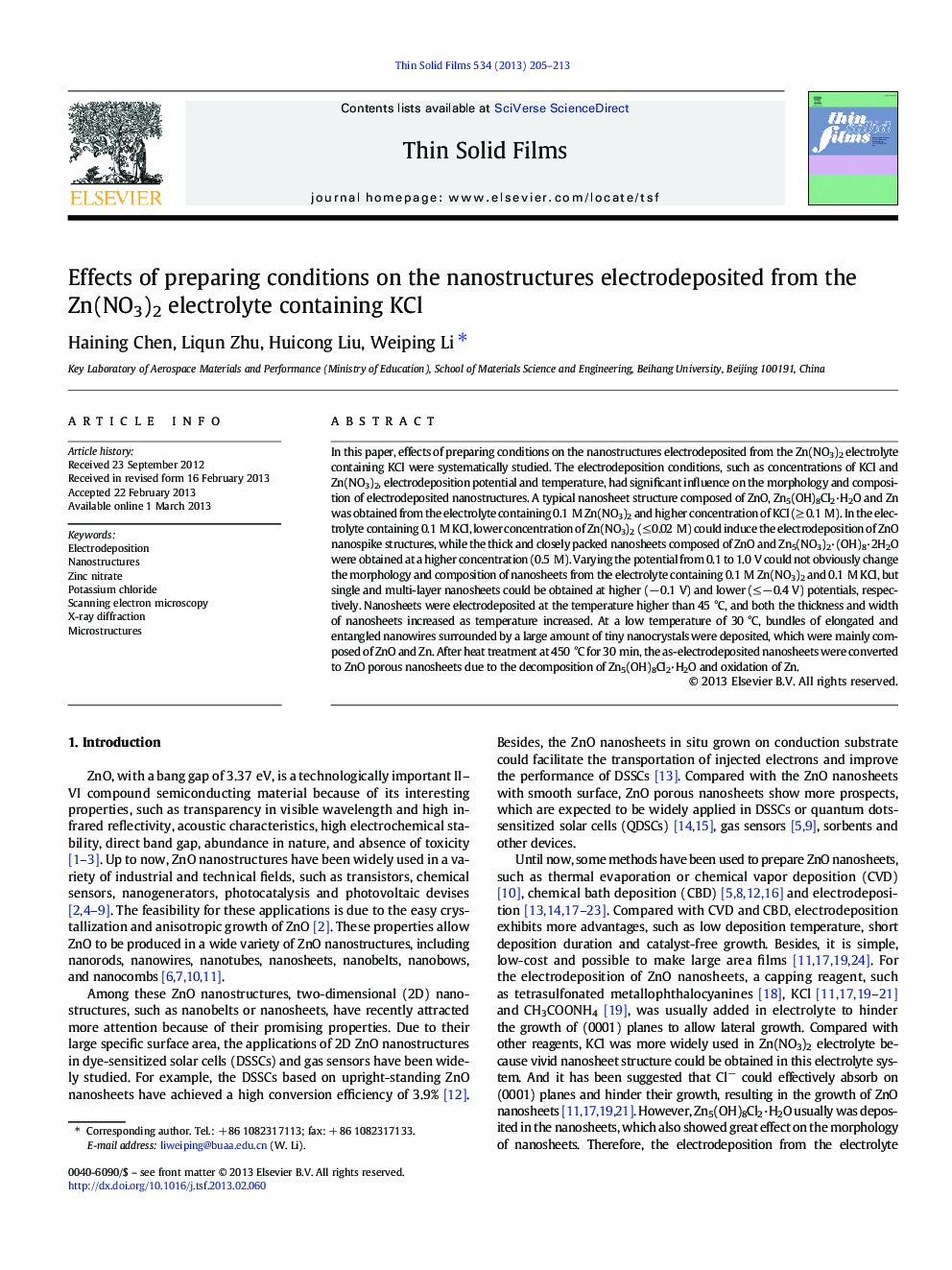| کد مقاله | کد نشریه | سال انتشار | مقاله انگلیسی | نسخه تمام متن |
|---|---|---|---|---|
| 1666270 | 1518070 | 2013 | 9 صفحه PDF | دانلود رایگان |

• Preparing conditions had great effects on the electrodeposited nanostructures.
• Nanosheets, nanospikes and nanowires could be controllably electrodeposited.
• ZnO porous nanosheets were obtained by sintering as-electrodeposited nanosheets.
In this paper, effects of preparing conditions on the nanostructures electrodeposited from the Zn(NO3)2 electrolyte containing KCl were systematically studied. The electrodeposition conditions, such as concentrations of KCl and Zn(NO3)2, electrodeposition potential and temperature, had significant influence on the morphology and composition of electrodeposited nanostructures. A typical nanosheet structure composed of ZnO, Zn5(OH)8Cl2·H2O and Zn was obtained from the electrolyte containing 0.1 M Zn(NO3)2 and higher concentration of KCl (≥ 0.1 M). In the electrolyte containing 0.1 M KCl, lower concentration of Zn(NO3)2 (≤ 0.02 M) could induce the electrodeposition of ZnO nanospike structures, while the thick and closely packed nanosheets composed of ZnO and Zn5(NO3)2·(OH)8·2H2O were obtained at a higher concentration (0.5 M). Varying the potential from 0.1 to 1.0 V could not obviously change the morphology and composition of nanosheets from the electrolyte containing 0.1 M Zn(NO3)2 and 0.1 M KCl, but single and multi-layer nanosheets could be obtained at higher (− 0.1 V) and lower (≤− 0.4 V) potentials, respectively. Nanosheets were electrodeposited at the temperature higher than 45 °C, and both the thickness and width of nanosheets increased as temperature increased. At a low temperature of 30 °C, bundles of elongated and entangled nanowires surrounded by a large amount of tiny nanocrystals were deposited, which were mainly composed of ZnO and Zn. After heat treatment at 450 °C for 30 min, the as-electrodeposited nanosheets were converted to ZnO porous nanosheets due to the decomposition of Zn5(OH)8Cl2·H2O and oxidation of Zn.
Journal: Thin Solid Films - Volume 534, 1 May 2013, Pages 205–213